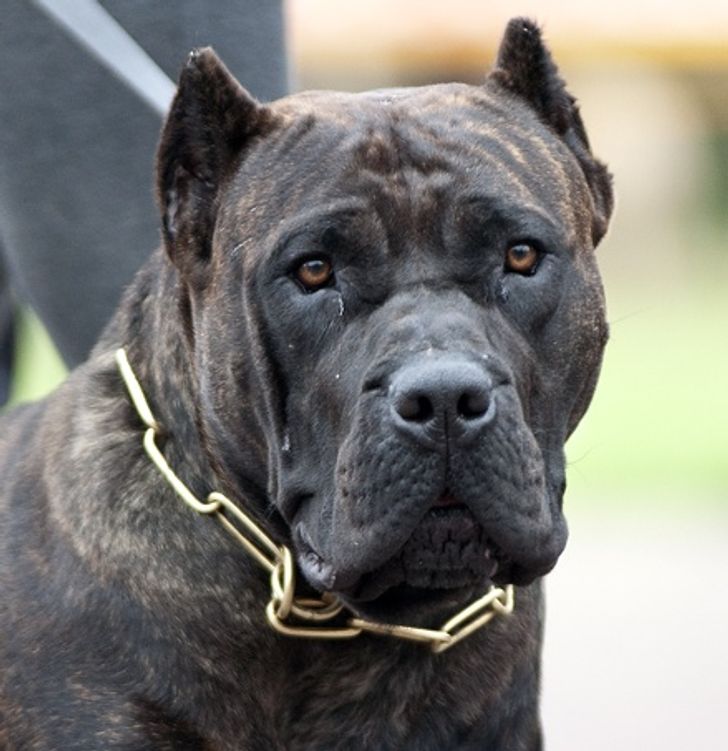As a dog-loving society, it’s important for us to know about the breeds that have been banned in certain areas. Banned dogs refer to specific breeds that are not allowed to reside in particular regions due to their perceived aggressive nature.
The ban is designed to ensure public safety and prevent fatal dog attacks. Unfortunately, the restriction on these breeds has created a significant controversy among dog owners and animal rights activists. Understanding the reason behind the ban and knowing which breeds are prohibited can help prevent unfortunate incidents and maintain a harmonious relationship between dog owners and the community.
In this blog, we will discuss everything you need to know about banned dogs, the breeds that made it to the list, and the reasons behind their prohibition.

1. Breed Discrimination Laws and Regulations
What is Breed Discrimination and how does it affect dogs and their owners? Breed Discrimination Laws and Regulations (BDL) refers to any policy or law that targets a specific breed of dog, prohibiting or restricting their ownership. This law is usually enforced on Pit Bull Terriers, but other breeds like German Shepherds or Dobermans have been targeted in the past. BDL not only includes breed bans but also de facto bans, where tough restrictions are placed, forcing owners to relinquish their pets. However, BDL does not improve public safety, as multiple peer-reviewed studies have shown. Instead, regulating dangerous dogs individually, regardless of breed, has been a more effective solution. Many animal and legal organizations oppose BDL, including the Centers for Disease Control, the National Animal Control Association, and the American Bar Association. [1][2]

2. Most Commonly Banned Dog Breeds Across the United States
What are the most commonly banned dog breeds across the United States?
The most commonly banned dog breeds across the United States are pitbull type dogs, specifically the American Staffordshire Terrier and the American Pitbull Terrier. The stigma surrounding these dogs as aggressive and dangerous has led to numerous bans and breed-specific legislation. Rottweilers are also frequently banned due to their strength and reputation as personal protection dogs, which can result in aggressive behavior if not properly trained. Wolf-dog hybrids, Cane Corsos, and Akitas are also commonly banned or restricted in certain cities due to their unpredictable or aggressive behavior. Owners of these breeds may need to comply with specific regulations, such as muzzling in public or carrying liability insurance. It is important to note that responsible ownership and proper training can greatly impact a dog’s behavior and reduce the likelihood of incidents. [3]

3. Training and Caring for Banned Breed Dogs
FAQ: Training and Caring for Banned Breed Dogs
Q1: What are the most important aspects of training and caring for banned breed dogs?
A: Socialization training, obedience training, pack leader training, and human (owner) behavioral modification are crucial when it comes to training and caring for banned breed dogs.
Q2: Are banned breed dogs unadoptable?
A: No, banned breed dogs are not unadoptable. However, it is important to check local laws before adopting a dog with a reputation for being aggressive or a guard dog to avoid having to relinquish them later.
Q3: Can banned breed dogs be friendly if trained and socialized properly?
A: Yes, with proper training and socialization, banned breed dogs can be as friendly as any other breed of dog.
Q4: What are some of the challenges of training banned breed dogs?
A: Banned breed dogs are often high on aggression statistics charts, making them a more challenging breed to train. Additionally, they may be banned by landlords, home owners associations, and home insurance companies.
Q5: What are some training methods for banned breed dogs?
A: Some effective training methods for banned breed dogs include positive reinforcement training, clicker training, and behavior modification training.
Q6: How important is exercise for banned breed dogs?
A: Banned breed dogs are energetic and usually require regular exercise to avoid becoming aggressive or destructive. They should be exercised regularly to keep them healthy and happy.
Q7: Are banned breed dogs suitable for families with young children?
A: While some banned breed dogs, such as Mastiffs, can be gentle and affectionate family pets, it is important to ensure proper socialization and training to prevent any aggression towards children or other animals. It is best to consult with a professional dog trainer before adopting a banned breed dog for a family with young children. [5][6]

4. Overview of Dog Breeds and Their Purposes
FAQ: Overview of Dog Breeds and Their Purposes
Q: What are the different types of dog breeds?
A: Dog breeds can be categorized into seven groups: herding, hound, sporting, non-sporting, terrier, toy, and working.
Q: What is the purpose of each type of dog breed?
A: Herding dogs, such as border collies, are used for moving and controlling livestock. Hound dogs, like beagles, are used for hunting. Sporting dogs, including golden retrievers, are bred for bird hunting. Non-sporting dogs, like bulldogs, don’t fit into other categories but are often kept as pets. Terrier dogs, such as Jack Russells, are bred for hunting small games. Toy dogs, like Chihuahuas, are small companion dogs. Working dogs, like German Shepherds, are trained for tasks including police and military work, search and rescue, and guiding the blind.
Q: Are there any dog breeds that are banned in certain countries?
A: Yes, there are several countries that have banned certain breeds of dogs, including France, Italy, Denmark, Finland, Spain, Great Britain, Ireland, and Australia.
Q: Why have certain breeds of dogs been banned?
A: Some countries have implemented breed-specific legislation (BSL) due to reported incidents of dog attacks or aggression. Some breeds, such as pit bulls, have been singled out as being dangerous to society. Others, like the Rottweiler, have been banned due to their strength and history of being used as guard dogs. However, critics argue that BSL unfairly targets specific breeds and punishes responsible dog owners. [7][8]

5. Countries with Banned Dog Breeds
FAQ: Countries with Banned Dog Breeds
Which countries have banned certain breeds of dogs?
Many countries around the world have imposed restrictions or bans on certain breeds of dogs. Australia, Denmark, Germany, Italy, Spain, Great Britain, Ireland, and the United States are among the countries that have imposed bans on certain dog breeds.
What are the reasons for banning certain breeds of dogs?
The main reason for banning certain dog breeds is to prevent injuries and deaths from dog bites. Dog breeds that are considered dangerous or aggressive have been banned in order to minimize the risk of harm to humans and other animals.
What are some of the dog breeds that are commonly banned?
American Pitbull Terriers, American Staffordshire Terriers, Doberman Pinschers, Rottweilers, and Japanese Tosas are among the most commonly banned dog breeds. However, the list of banned breeds varies from country to country.
Are all breeds of dogs banned in certain countries?
No, not all breeds of dogs are banned in all countries. Some countries have restrictions on certain breeds, while others have no bans or restrictions in place.
What should dog owners do if they want to travel to a country that has banned their breed?
Dog owners who want to travel to a country that has banned their breed should research the laws and regulations in that country carefully. In some cases, it may be possible to obtain special permission or certifications that allow a banned breed to enter the country. [9][10]





